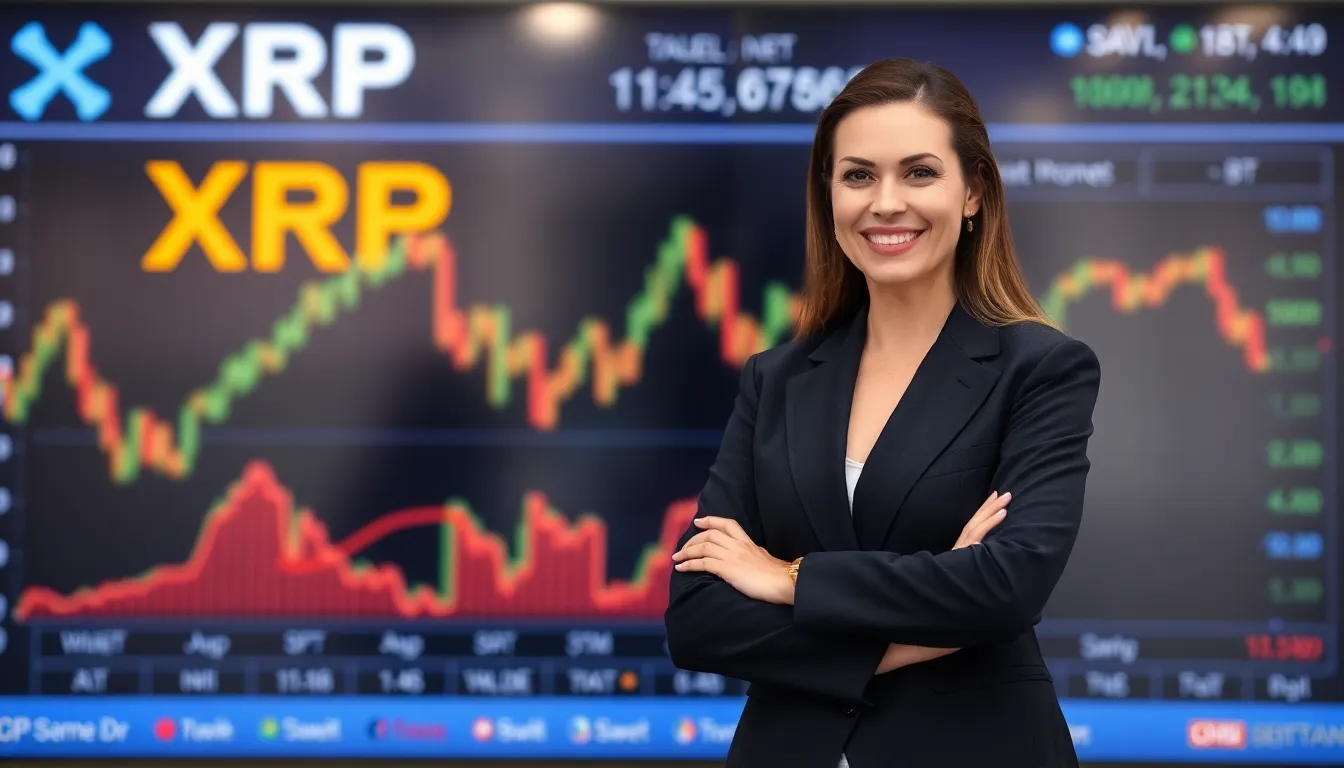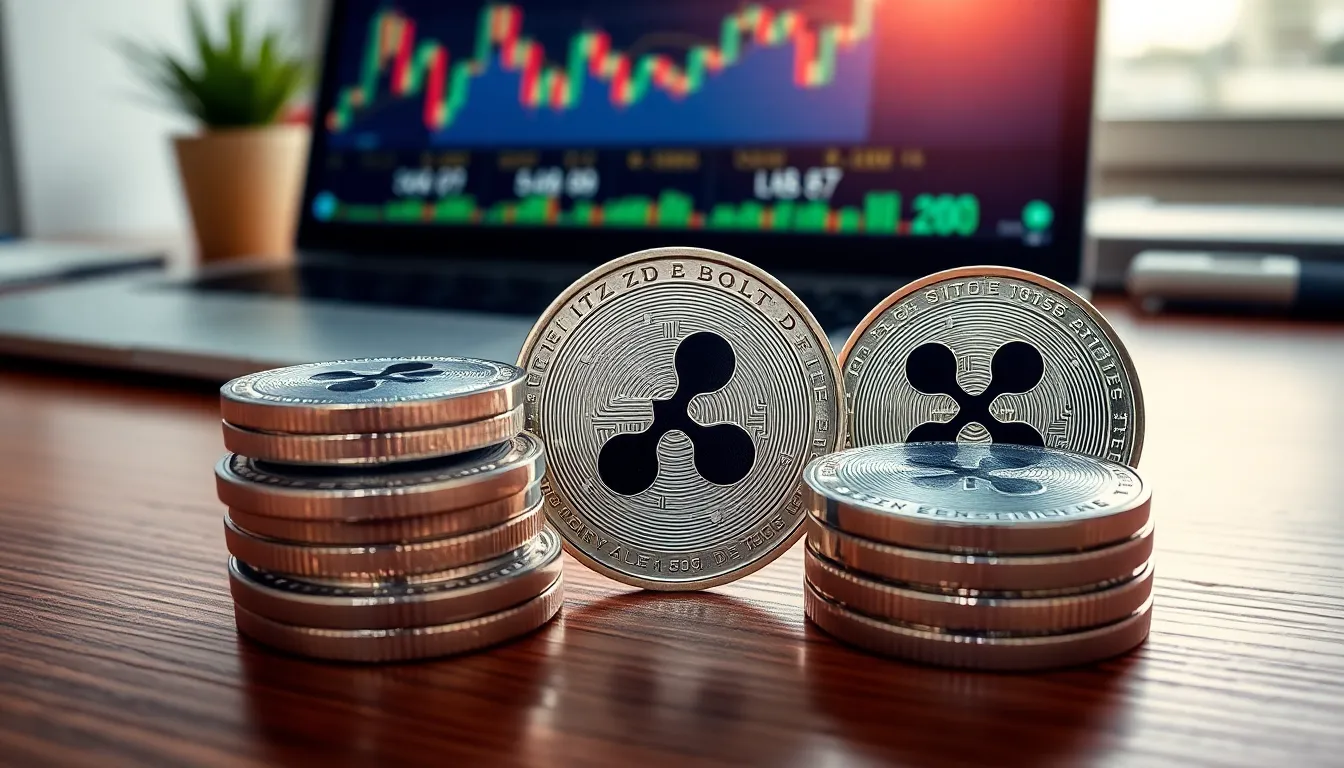In the fast-paced world of cryptocurrency, staying updated is as crucial as knowing the difference between a Bitcoin and a bag of chips. Ripple’s XRP has been making waves lately, and not just because it sounds like a superhero sidekick. With its unique approach to cross-border payments, XRP is challenging traditional banking systems and turning heads in the financial sector.
Table of Contents
ToggleCryptocurrency News Ripple XRP Overview
Ripple’s XRP continues to shape the cryptocurrency market with its emphasis on efficient cross-border transactions. The use of blockchain technology allows XRP to reduce transaction times to just seconds, significantly lower transaction costs compared to traditional banking methods. RippleNet, Ripple’s network, connects institutions and enables seamless international payments while enhancing liquidity.
Recent developments have attracted attention to XRP’s legal battles with regulatory bodies. The ongoing case with the U.S. Securities and Exchange Commission (SEC) pertains to whether XRP qualifies as a security. Court rulings could influence XRP’s regulatory status, affecting its price and adoption among financial institutions.
In terms of market performance, XRP has shown resilience despite market fluctuations. As of October 2023, XRP’s market capitalization stands at approximately $24 billion, ranking it among the top five cryptocurrencies. Analysts observe that bullish trends often correlate with strategic partnerships Ripple has forged with banks and payment providers worldwide.
Investors are keenly monitoring XRP’s integration into financial services. Ripple’s solutions promise to streamline payment processing, benefiting banks through improved efficiency and cost savings. Additionally, innovative features like on-demand liquidity (ODL) allow businesses to access capital instantly, bypassing traditional credit lines.
Maintaining awareness of XRP’s developments and regulatory outcomes remains crucial for those engaged in cryptocurrency markets. Market participants will benefit from following updates regarding litigation, technological advancements, and partnerships that may further validate XRP’s role in revolutionizing financial transactions.
Recent Developments in Ripple XRP

Ripple XRP continues to make headlines in the cryptocurrency space with significant progress and updates that affect its market influence and regulatory environment.
Regulatory Updates
Regulatory developments surrounding Ripple XRP remain crucial. The U.S. Securities and Exchange Commission (SEC) lawsuit concerning XRP’s classification as a security is ongoing. Recent court rulings have suggested XRP may not be classified as a security when sold on exchanges, positively impacting investor confidence. As the case progresses, broader implications for regulatory frameworks are expected, particularly regarding how cryptocurrencies are treated in the United States. Ongoing legal clarity might lead to increased institutional adoption and a more defined regulatory landscape.
Market Performance
Market performance for Ripple XRP has shown notable resilience. As of October 2023, XRP maintains a market capitalization of around $24 billion, ranked within the top five cryptocurrencies. Price fluctuations often correlate with developments related to its legal status and partnerships. Analysts observe that strategic alliances with financial institutions and payment providers contribute to bullish trends. The integration of Ripple’s on-demand liquidity (ODL) solutions continues to attract interest, enhancing XRP’s appeal in streamlining cross-border payment processing. Continuous observation is vital as market dynamics evolve alongside Ripple’s activities.
Ripple Technology and Its Impact
Ripple’s technology fundamentally transforms cross-border payment systems. Its innovations address key inefficiencies in traditional banking, ultimately enhancing transaction speed and cost-effectiveness.
Innovations in Blockchain
Ripple utilizes a unique consensus algorithm to validate transactions, which differs from traditional mining methods. This approach fosters rapid transaction confirmations, typically completed in 3-5 seconds. Ripple’s XRP Ledger (XRPL) operates independently, allowing for secure and transparent transactions. The platform supports smart contracts, enabling developers to create various financial applications while maintaining low transaction fees. Ripple’s focus on interoperability promotes seamless connections between different financial institutions, enhancing the overall user experience in global payments.
Scalability Solutions
Scalability remains a crucial focus for Ripple. The platform can process approximately 1,500 transactions per second, significantly surpassing Bitcoin’s 7 transactions per second and Ethereum’s 30. As a result, Ripple supports a high volume of transactions without delays, making it suitable for enterprise-level applications. Partnerships with multiple banks and payment providers demonstrate Ripple’s commitment to expanding its network while maintaining efficiency. With continuous upgrades to its infrastructure, Ripple aims to accommodate growing transaction demands, ensuring long-term sustainability in the evolving digital finance landscape.
The Future of Ripple XRP
Ripple XRP’s future remains dynamic as the cryptocurrency sector fluctuates and evolves. Analysts focus on various predictions, highlighting potential growth factors that could shape its trajectory.
Predictions and Trends
Analysts project that Ripple XRP could see increased adoption due to continuous improvements in transaction speed and cost-effectiveness. Analysts anticipate institutional investors will increasingly integrate XRP into their payment systems, given its liquidity features. Recent partnerships with prominent financial institutions may further boost XRP’s reputation and usage in cross-border transactions. Predictions suggest strong market performance, particularly if regulatory clarity solidifies XRP’s status as a non-security. Such developments could lead to broad acceptance across financial services, enhancing XRP’s value proposition and positioning it for sustained relevance in the cryptocurrency ecosystem.
Challenges Ahead
Ripple XRP faces significant challenges amid ongoing regulatory scrutiny. Legal uncertainties stemming from the SEC lawsuit could inhibit investor confidence, impacting XRP’s price volatility. Potential market competition from other cryptocurrencies and traditional financial systems poses additional hurdles. The necessity to maintain technological advantages while assuring compliance with global regulatory standards is vital for Ripple’s long-term success. Market trends indicate that any negative ruling or delay in legal outcomes may adversely affect XRP’s adoption rates and market performance. Ripple must also address scalability concerns as transaction demands increase, ensuring its systems continue to operate efficiently alongside competitive offerings.
Ripple’s XRP stands at the forefront of cryptocurrency innovation with its transformative approach to cross-border payments. As it continues to navigate regulatory challenges and market fluctuations, the potential for increased institutional adoption remains strong. Ripple’s focus on efficiency and speed positions it well against traditional banking systems while enhancing its credibility in the financial sector.
Investors should keep a close eye on Ripple’s developments and partnerships, as these factors could significantly influence XRP’s market trajectory. The ongoing evolution of the cryptocurrency landscape underscores the need for vigilance in monitoring XRP’s progress. With its unique technology and strategic initiatives, Ripple is poised to play a pivotal role in shaping the future of global financial transactions.




